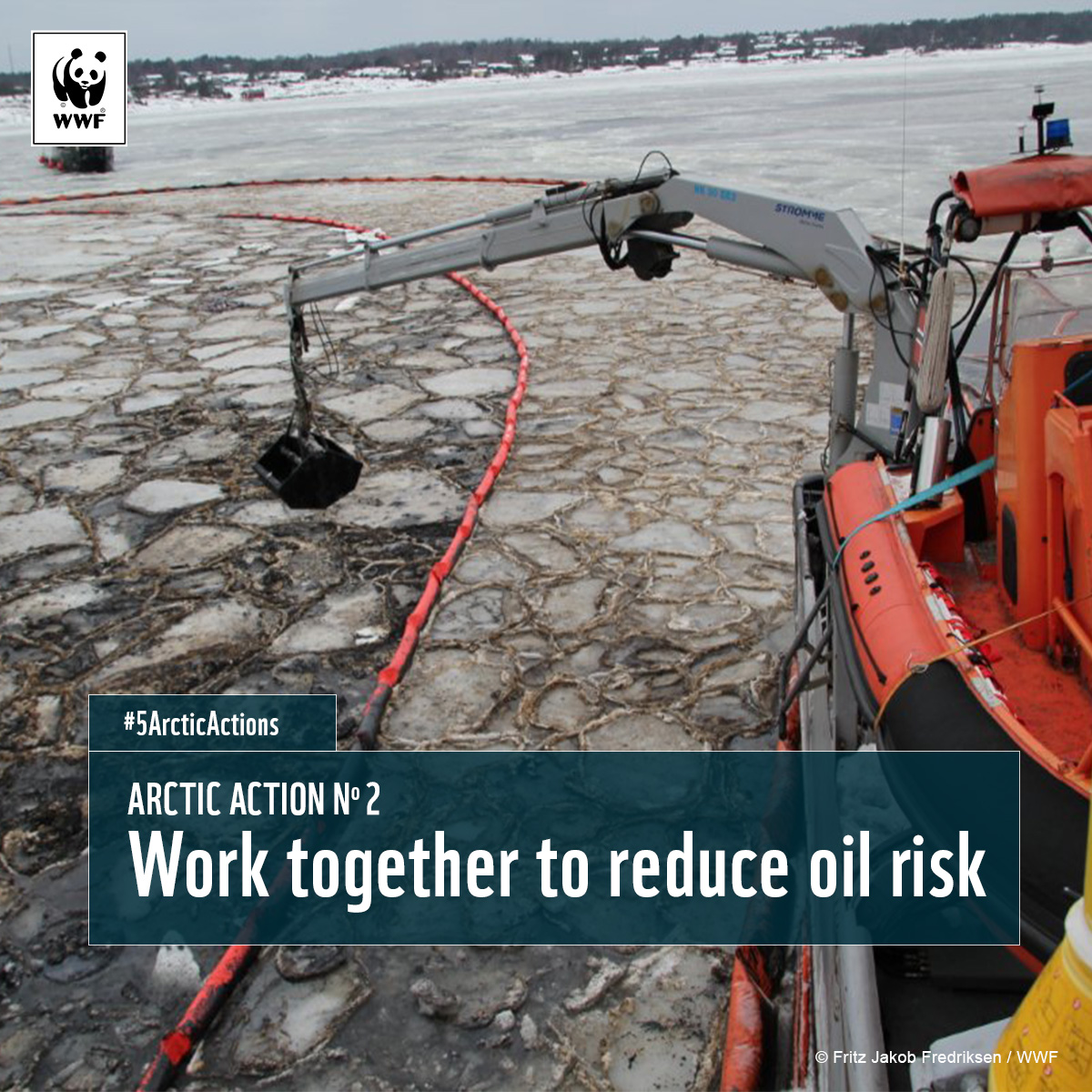This week, Arctic governments are meeting in Norway to talk about Arctic biodiversity. But they need to do more than talk. They’ve invested in reams of excellent research on life in the Arctic – now they need to act! They’ll make commitments this April, when the United States begins its chairmanship of the Arctic Council. Will they commit to Arctic action? This week, we look at #5ArcticActions nations can take to protect Arctic life:

WWF’s Dan Slavik is working with communities across northern Canada on conservation issues big and small. Few issues are as big as a potential oil spill. According to new oil spill dispersion mapping, a spill in Canada’s Beaufort Sea could spread as far as Russia. And currently, there’s no proven technology to clean up a spill in icy waters.
Why is oil spill modelling important for Arctic life and livelihoods?
With the real potential for increased shipping and Oil and Gas exploration in the Beaufort Sea, there is an ever present risk of an oil spill. One Inuvialuit elder commented at the Berger Inquiry in the 1980s:
“An oil spill out there in that moving ice where they can’t control it, that’s the end of the seals. I think that not only will this part of the world suffer if the ocean is finished, I think every [Eskimo, from Alaska] all the way to the Eastern Arctic is going to suffer because that oil … is going to finish the fish. And those fish don’t just stay here, they go all over. Same with the seals, same with the polar bears, they go all over the place, and if they come here and get soaked with oil… they’re finished.”
By completing this scientific work, we hope to inform Northerners about the risk of oil spills –both big and small- and better understand how far the oil will spread, and how would it impact the communities, environment, and species of the Beaufort Sea.
Are particular Arctic States showing leadership in assessing the risk of Arctic oil/gas? How?
Environment Canada has done some good work mapping shoreline sensitivity in the Beaufort, and completing some baseline scientific research through the Beaufort Regional Environmental Assessment. However, we don’t have the capacity to effectively respond to oil spills in the Canadian Beaufort.
What’s one concrete action that Arctic states can take in the next year?
Since we can’t effectively clean up a spill, we need to ensure that–at minimum–we protect the most valuable places. Places with important cultural, biological and economic value should agreed upon by communities, nations and industry. Then, states must put in place special measures to prevent a spill (like special zoning, shipping lanes, or even no-go zones), and infrastructure to respond to a spill if it happens. This means cooperating across national borders – oil spill don’t respect boundaries.
Is there anything the public can do?
Visit http://arcticspills.wwf.ca for to explore the risks of an oil spill in the Beaufort Sea.




